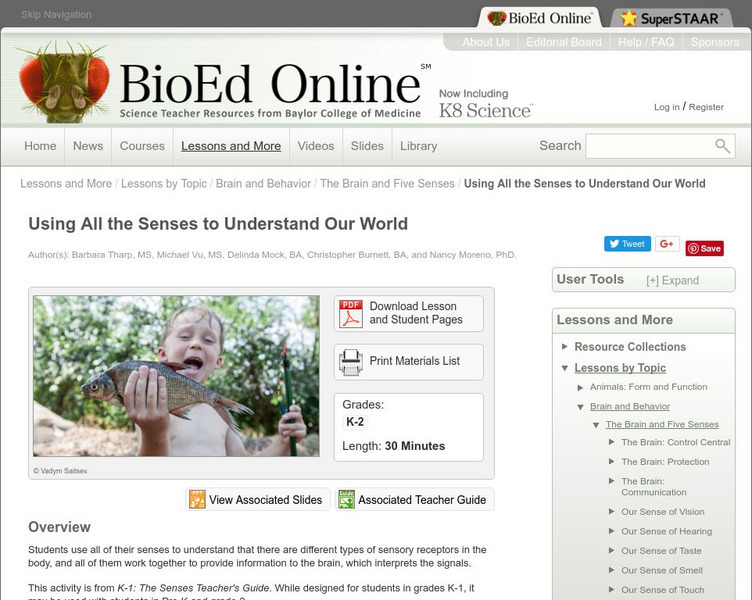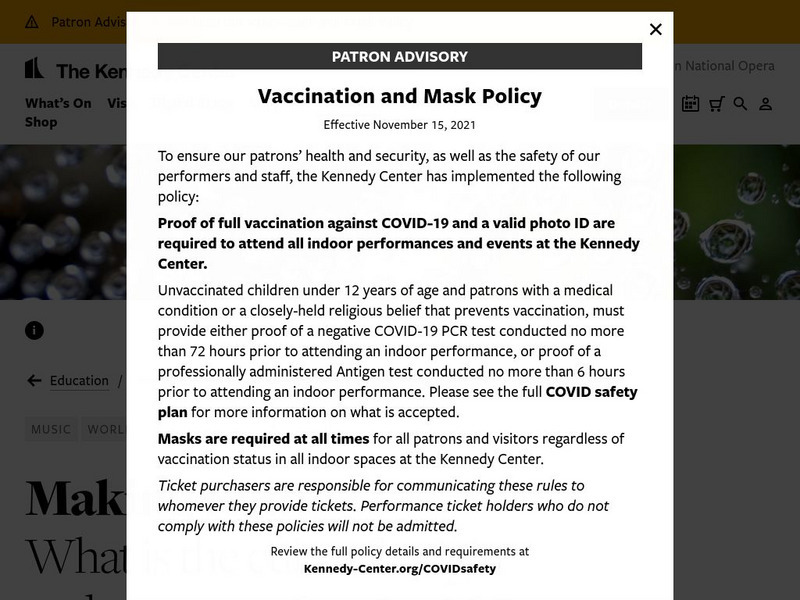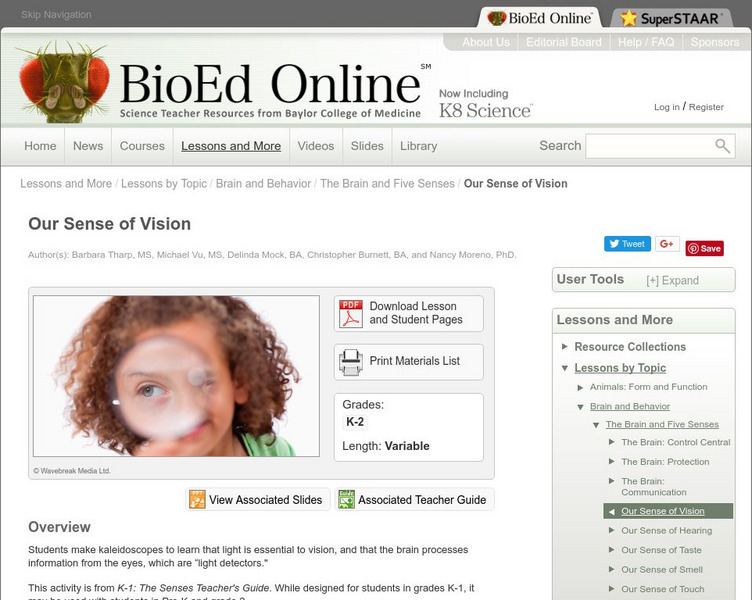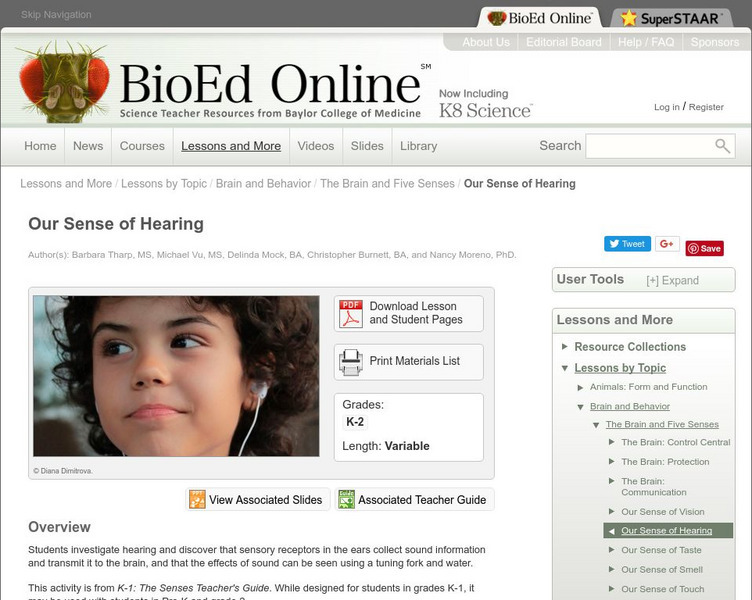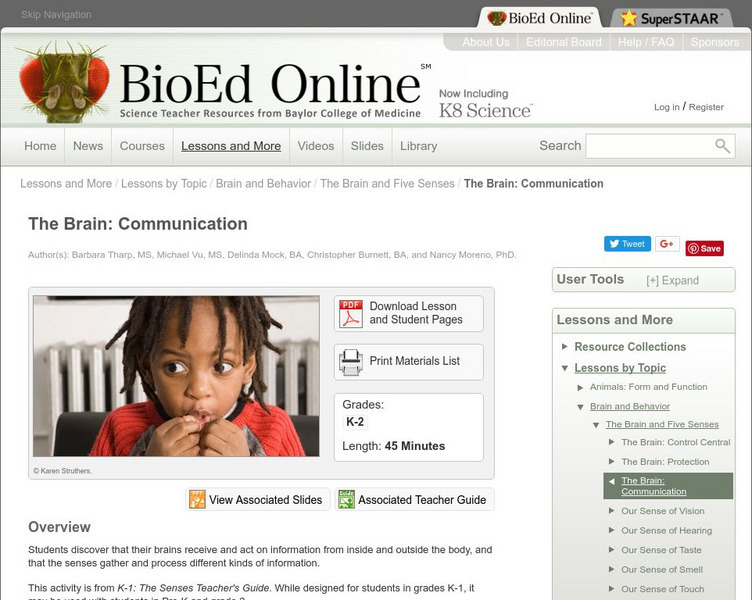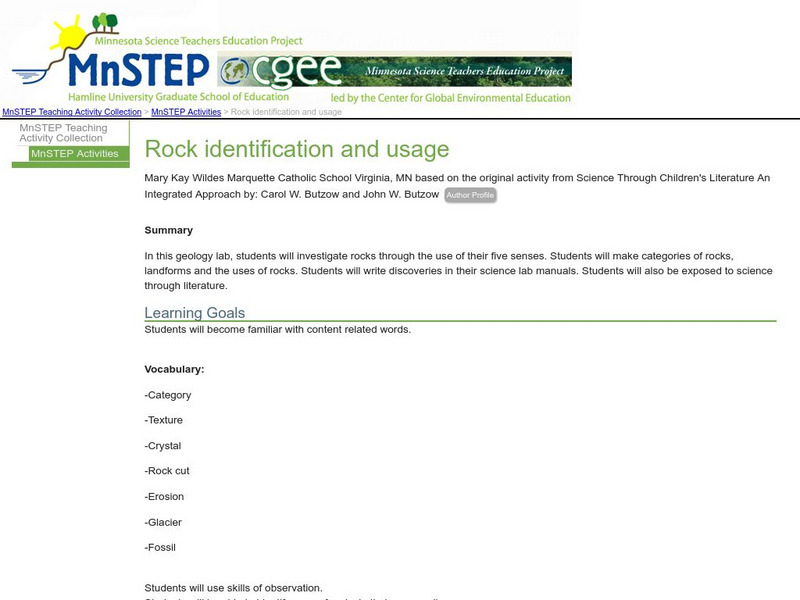Alabama Learning Exchange
Alex: It's Great to Be Me!
This lesson addresses the similarities and differences among people. Incorporating the literature of Eric Carle and a virtual field trip focusing on healthy habits and the five senses, students will have a greater sense of their...
Science Education Resource Center at Carleton College
Serc: Investigating Oranges How Many Sections Are Inside?
In this biology investigation learners will be asked to attempt to determine how many sections exist in an orange without having peeled it. Students will work in small cooperative groups. Each group will be able to use a small magnifying...
BioEd Online
Bio Ed Online: Using All Our Sources to Understand Our World
How do we use our senses to understand our surroundings? What types of input are provided by the different senses? In this lesson students use all of their senses to understand that there are different types of sensory receptors in the...
BioEd Online
Bio Ed Online: Our Sense of Taste
What are the basic tastes? Where is information about taste detected in the body? In this lesson students taste four mystery substances and learn that the tongue is covered with taste buds, which contain taste receptors that communicate...
John F. Kennedy Center
The Kennedy Center: Making Rain
Your students will enjoy making their own rainstick while learning about poetry and expressing their feelings about rain. This three-part lesson gives step-by-step instructions, as well as an assessment rubric.
Better Lesson
Better Lesson: Towers, Towers, Towers 1 5
Children develop a true sense of number by working with real things. In this lesson, kindergarteners use blocks to build towers, learning what numbers 1-5 mean.
Other
Nearpod: Represent, Count, and Write Numbers 0 5
In this lesson on counting, students will write, and represent numbers 0 through 5.
BioEd Online
Bio Ed Online: Our Sense of Vision
Which parts of the body are involved in vision (seeing)? Is light important for vision? In this lesson young scholars make kaleidoscopes to learn that light is essential to vision, and that the brain processes information from the eyes,...
BioEd Online
Bio Ed Online: Our Sense of Hearing
What causes sound? How do our ears detect sound? How do our brains recognize sound? In this lesson students investigate hearing and discover that sensory receptors in the ears collect sound information and transmit it to the brain, and...
Better Lesson
Better Lesson: Eight Friends! Exploring the Number Eight
Many kindergarteners come to school with rote counting skills, but they often do not understand that the numbers they can recite actually represent quantities. This instructional activity helps to make that connection.
BioEd Online
Bio Ed Online: The Brain: Communication
How does information from different parts of the body reach the brain? In this lesson students discover that their brains receive and act on information from inside and outside the body, and that the senses gather and process different...
Other
Ms. Jordan Reads: Teaching Sensory Language With Mentor Texts
This lesson on sensory language revolves around the descriptive book "Where Butterflies Grow". Students will learn how sensory language connects to the five senses, learn a sensory language chant, understand the purpose of sensory...
Alabama Learning Exchange
Alex: 'Nuts' About Peanuts!! (Writing)
This lesson will be implemented as part of a unit about plants. The students will describe the characteristics of a peanut and peanut butter (using their five senses) and record their observations/descriptions on a graphic organizer....
Better Lesson
Better Lesson: Towers, Towers, Towers 6 10
This lesson plan is the sequel to Towers! Towers! Towers! 1-5. Students continue to develop their sense of quantity as they build successive taller towers.
Illustrative Mathematics
Illustrative Mathematics: Many Ways to Do Addition 1
Students will learn that there are multiple ways to solve math problems, such as drawing a picture, using counters, using fingers, using a number line, and memorizing facts. The teacher writes a simple addition problem on the whiteboard...
Better Lesson
Better Lesson: Match Me!
Kids love to count and build puzzles. This activity encourages them to do both! The kids count objects on puzzle pieces and match the groups of objects to the correct number.
Varsity Tutors
Varsity Tutors: Web English Teacher: Aliki
This resource site for the work of the children's author Aliki includes lesson plans and activities for students reading Corn is Maize, Painted Words, Spoken Memories, My Visit to the Zoo, My Visit to the Aquarium, and Wild and Wooly...
Science Friday Initiative
Science Friday: Can Our Eyes Fool Our Taste Buds?
Engage young learners in science with this poem and simple experiment from The Poetry Friday Anthology for Science for Kids by Pomelo Books.
Science Education Resource Center at Carleton College
Serc: Mn Step: Rock Identification and Usage
In this activity, students explore rocks using their five senses. They sort them into groups, learn about landforms, and learn how rocks are used by humans. Their discoveries are recorded in their science notebooks.
BioEd Online
Bio Ed Online: The Brain: Control Central
What do you know about the brain? For this early learners lesson, students will explore the basic functions and characteristics of the brain and skull, and also learn about three major structures in the brain: the cerebrum, cerebellum...
Other
Teaching Ideas for Primary Teachers: Science Ideas
A great resource to discover fun new activities to use in your classroom. Activities are age-appropriate, and span several science topics.
Illustrative Mathematics
Illustrative Mathematics: k.oa Shake and Spill
The purpose of this task is for students to decompose a number as a sum of two other numbers in more than one way. Students will shake and spill 5 two colored counters and determine how many of each color is showing and record the sum...
BioEd Online
Bio Ed Online: The Brain: Protection
What protects the brain? Why does the brain need to be protected? In this lesson young scholars will learn about the fragility of the brain and that it is enclosed by the skull, which protects the brain and forms the shape of the head.


